- Home
- Oliver Sacks
Seeing Voices Page 6
Seeing Voices Read online
Page 6
Social and emotional intercourse, intellectual intercourse too, starts from the first day of life.17 Vygotsky was greatly interested in these prelinguistic, preintellectual stages of life, but his especial interest was in language and thought and how they come together in the development of the child. Vygotsky never forgets that language is always, and at once, both social and intellectual in function, nor does he forget for a moment the relation of intellect and affect, of how all communication, all thought, is also emotional, reflecting “the personal needs and interests, the inclinations and impulses” of the individual.
The corollary to all this is that if communication goes awry, it will affect intellectual growth, social intercourse, language development, and emotional attitudes, all at once, simultaneously and inseparably. And this, of course, is what may happen, what does happen, all too frequently, when a child is born deaf. Thus Hilde Schlesinger and Kathryn Meadow say, as the first sentence of their book, Sound and Sign:18
Profound childhood deafness is more than a medical diagnosis; it is a cultural phenomenon in which social, emotional, linguistic, and intellectual patterns and problems are inextricably bound together.
It is to Schlesinger and her colleagues, over the last twenty years, that we owe the fullest and deepest observations on the problems that may beset the deaf from childhood to adult life, and how these are related to the earliest communications between mother and child (and later, between teacher and pupil)—communications all too often grossly defective or distorted. Schlesinger’s central concern is with how children—and, in particular, deaf children—are “coaxed” from a perceptual to a conceptual world, how crucially dependent this is upon such a dialogue. She has shown how the “dialectic leap” that Vygotsky speaks of—the leap from sensation to thought—involves not just talking, but the right sort of talking, a dialogue rich in communicative intent, in mutuality, and in the right sort of questioning, if the child is to make this great leap successfully.
Recording the conversational transactions of mother and child from earliest life, she has shown how often, and with what dire effects, this may go wrong when the child is deaf. Children, healthy children, are endlessly curious: they are constantly seeking cause and meaning, constantly asking “Why?” “How?” “What if?” It was the absence of such questioning, and the very incomprehension of such question forms, that struck so ominous a note when I visited Braefield. Writing in more general terms about the all-too-common problems of the deaf, Schlesinger notes:19
At eight years of age, many deaf youngsters show a delay in their understanding of questions, still continue to label, do not impose “central meanings” to their answers. They have a poor sense of causation, and rarely introduce ideas about the future.
Many, but not all. There tends, indeed, to be a rather sharp distinction between children who have these problems and those who do not, between those who are intellectually, linguistically, socially, and emotionally “normal” and those who are not. This distinction, so different from the normal bell-curve distribution of abilities, shows that the dichotomy occurs after birth, that there must be early life experiences with a decisive power to determine the entire future. The origin of questioning, of an active and questing disposition in the mind, is not something that arises spontaneously, de novo, or directly from the impact of experience; it stems, it is stimulated, by communicative exchange—it requires dialogue, in particular the complex dialogue of mother and child.20 It is here, Schlesinger finds, that the dichotomies start:21
Mothers talk with their children, do so very differently, and tend to be more often at one side or the other of a series of dichotomies. Some talk with their youngsters and participate primarily in dialogue; some primarily talk at their children. Some mainly support the actions of their offspring, and if not, provide reasons why not; others primarily control the actions of their children, and do not explain why. Some ask genuine questions … others constraint questions.… Some are prompted by what the child says or does; others by their own inner needs and interests.… Some describe a large world in which events happened in the past and will happen in the future; others comment only about the here and now.… Some mothers mediate the environment by endowing stimuli with meaning [and others do not].
A terrible power, it would seem, lies with the mother to communicate with her child properly or not; to introduce probing questions such as “How?” “Why?” and “What if?” or replace them with a mindless monologue of “What’s this?” “Do that”; to communicate a sense of logic and causality, or to leave everything at the dumb level of unaccountability; to introduce a vivid sense of place or time, or to refer only to the here and now; to introduce a “generalized reflection of reality,” a conceptual world that will give coherence and meaning to life, and challenge the mind and emotions of the child, or to leave everything at the level of the ungeneralized, the unquestioned, at something almost below the animal level of the perceptual.22 Children, it would seem, cannot choose the world they will live in—the mental and emotional, any more than the physical world; they are dependent, in the beginning, on what they are introduced to by their mothers.
It is not just language, but thought, that must be introduced. Otherwise the child will remain helplessly trapped in a concrete and perceptual world—the situation with Joseph, Kaspar, and Ildefonso. This peril is much greater if the child is deaf—because (hearing) parents may not know how to address their child and, if they communicate at all, may use rudimentary forms of dialogue and language that do not advance the child’s mind and that, indeed, prevent its advance.
Children seem to copy faithfully the cognitive world (and “style”) introduced to them by their mothers [Schlesinger writes]. Some mothers introduce a world that is populated by individual, static objects in the here-and-now labelled in identical ways for their children from toddlerhood through latency.… Such mothers avoid language at a distance from the perceptual world … and in poignant attempts to share a world with their offspring join, and remain in, the perceptual world of their children.…
[Other mothers, in contrast], introduce a world wherein things that are seen, touched and heard are enthusiastically processed through language. The world they introduce is wider, more complex, and more interesting to the toddlers. They too label objects in the perceptual world of their children, but use correct labels for more sophisticated percepts, and add attributes to them via adjectives.… They include people, and label the actions and feelings of individuals in the world, and characterize them via adverbs. They not only describe the perceptual world but help their children reorganize it and to reason about its multiple possibilities.23
These mothers, then, encourage the formation of a conceptual world which, far from impoverishing, enhances the perceptual world, enriching it and elevating it continually to the level of symbol and meaning. Poor dialogue, communication defeat, so Schlesinger feels, leads not only to intellectual constriction but to timidity and passivity; creative dialogue, a rich communicative interchange in childhood, awakens the imagination and mind, leads to a self-sufficiency, a boldness, a playfulness, a humor, that will be with the person for the rest of his life.24
Charlotte, a little girl of six, is also, like Joseph, congenitally deaf. But Charlotte is tremendously animated, playful, full of curiosity, turned vividly to the world. She is almost indistinguishable from any other six-year-old—totally different from poor, cut-off Joseph. What made the difference? As soon as Charlotte’s parents realized she was deaf—when she was a few months old—they decided to learn a signed language, knowing that she would not be able to pick up spoken language easily. They did this, as did several of their relatives and friends. As Charlotte’s mother, Sarah Elizabeth, wrote when Charlotte was four:
Our daughter Charlotte was diagnosed profoundly deaf at ten months old. During these past three years we have experienced a range of emotions: disbelief, panic and anxiety, rage, depression and grief, and finally acceptance and appreciation. As our initia
l panic wore off it became clear that we needed to use sign language with our daughter while she was young.25
We started a sign language class at our home studying Signed Exact English, SEE, an exact replication of spoken English in signs, which we felt would help us in passing on our English language, literature, and culture to our child. As hearing parents we were overwhelmed by the task of learning a new language ourselves and having to teach it to Charlotte simultaneously, so the familiarity of English syntax made sign language seem accessible to us.… We desperately wanted to believe Charlotte was similar to us.
After a year we decided to move away from the rigidity of SEE to pidgin Signed English, a mixture of American Sign Language vocabulary, which is more visually descriptive, and English syntax, which is familiar … [but] the elaborate linear structures of spoken English don’t translate into interesting sign language, so we had to reorient the way we thought to produce visual sentences. We were introduced to the most lively and exciting aspects of signing: idioms, humor, mime, whole-concept signs, and facial expression.… Now we are moving to American Sign Language, studying it with a deaf woman, a native signer who can communicate in signs without hesitation and can codify the language for us hearing people. We are excited and stimulated by the process of learning an ingenious and sensible language which has such beauty and imagination. It is a delight to realize that Charlotte’s signing reflects visual thought patterns. We are startled into thinking differently about physical objects, and their placement and motion, because of Charlotte’s expressions.
I found this narrative powerful and fascinating, indicating how Charlotte’s parents first wanted to believe their daughter essentially similar to themselves, despite the fact that she uses her eyes, not her ears; how they first used SEE, which has no real structure of its own, but is a mere transliteration of an auditory language, and how they only gradually came to appreciate the fundamental visuality of their child, her use of “visual thought patterns,” and how this both needed and generated a visual language. Rather than imposing their auditory world on their child, as so many parents of the deaf do, they encouraged her to advance into her own (visual) world, which they were then able to share with her. By the age of four, indeed, Charlotte had advanced so far into visual thinking and language that she was able to provide new ways of thinking—revelations—to her parents.
Early in 1987, Charlotte and her family moved from California to Albany, New York, and her mother wrote again to me:
Charlotte is now a six-year-old first-grader. We, of course, feel she is a remarkable person because, although profoundly deaf, she is interested, thoughtful, competent within her (mainly) hearing world. She seems comfortable in both ASL and English, communicates enthusiastically with deaf adults and children and reads and writes at a third-grade level. Her hearing brother, Nathaniel, is fluent and easy in Sign; our family conducts many conversations and much business in sign language.… I feel our experience bears out the idea that early exposure to visually coherent language develops complex conceptual thought processes. Charlotte knows how to think and how to reason. She uses effectively the linguistic tools she has been given to build complicated ideas.
When I went to visit Charlotte and her family, the first thing that struck me was that they were a family—full of fun, full of liveliness, full of questions, all together. There was none of the isolation one so often sees with the deaf—and none of the “primitive” language (“What’s this? What’s that? Do this! Do that!”), the condescension, of which Schlesinger speaks. Charlotte herself was full of questions, full of curiosity, full of life—a delightful, imaginative, and playful child, vividly turned to the world and to others. She was disappointed that I did not sign, but instantly commandeered her parents as interpreters and questioned me closely about the wonders of New York.
About thirty miles from Albany is a forest and river, and here I later drove with Charlotte, her parents, and her brother. Charlotte loves the natural world as much as the human world, but loves it in an intelligent way. She had an eye for different habitats, for the way things live together; she perceived cooperation and competition, the dynamics of existence. She was fascinated by the ferns that grew by the river, saw that they were very different from the flowers, understood the distinction between spores and seeds. She would exclaim excitedly in Sign over all the shapes and colors, but then attend and pause to ask, “How?” and “Why?” and “What if?” Clearly, it was not isolated facts that she wanted, but connections, understanding, a world with sense and meaning. Nothing showed me more clearly the passage from a perceptual to a conceptual world, a passage impossible without complex dialogue—a dialogue that first occurs with the parents, but is then internalized as “talking to oneself,” as thought.
Dialogue launches language, the mind, but once it is launched we develop a new power, “inner speech,” and it is this that is indispensable for our further development, our thinking. “Inner speech,” says Vygotsky, “is speech almost without words … it is not the interior aspect of external speech, it is a function in itself.… While in external speech thought is embodied in words, in inner speech words die as they bring forth thought. Inner speech is to a large extent thinking in pure meanings.” We start with dialogue, with language that is external and social, but then to think, to become ourselves, we have to move to a monologue, to inner speech. Inner speech is essentially solitary, and it is profoundly mysterious, as unknown to science, Vygotsky writes, as “the other side of the moon.” “We are our language,” it is often said; but our real language, our real identity, lies in inner speech, in that ceaseless stream and generation of meaning that constitutes the individual mind. It is through inner speech that the child develops his own concepts and meanings; it is through inner speech that he achieves his own identity; it is through inner speech, finally, that he constructs his own world. And the inner speech (or inner Sign) of the deaf may be very distinctive.26
It is evident to her parents that Charlotte constructs her world in a different way, perhaps radically so: that she employs predominantly visual thought patterns, and that she “thinks differently” about physical objects. I was struck by the graphic quality, the fullness of her descriptions. Her parents spoke too of this fullness: “All the characters or creatures or objects Charlotte talks about are placed,” her mother said; “spatial reference is essential to ASL. When Charlotte signs, the whole scene is set up; you can see where everyone or everything is; it is all visualized with a detail that would be rare for the hearing.” This placing of objects and people in specific locations, this use of elaborate, spatial reference had been striking in Charlotte, her parents said, since the age of four and a half—already at that age she had gone beyond them, shown a sort of “staging” power, an “architectural” power that they had seen in other deaf people—but rarely in the hearing.27
Language and thought, for us, are always personal—our utterances express ourselves, as does our inner speech. Language often feels to us, therefore, like an effusion, a sort of spontaneous transmission of self. It does not occur to us at first that it must have a structure, a structure of an immensely intricate and formal kind. We are unconscious of this structure; we do not see it, any more than we see the tissues, the organs, the architectural makeup of our own bodies. But the enormous, unique freedom of language would not be possible without the most extreme grammatical constraints. It is grammar, first of all, that makes a language possible, that allows us to articulate our thoughts, our selves, in utterance.
This was clear, in regard to speech, by 1660 (the date of the Port-Royal Grammar), but was only established, in regard to Sign, in 1960.28 Sign was not seen, even by signers, as a true language, with its own grammar, before then. And yet the notion that Sign might have an internal structure is not entirely new—it has, so to speak, an odd prehistory of its own. Thus Roch-Ambroise Bébian, Sicard’s successor, not only realized that Sign had an autonomous grammar of its own (and thus had no need of an alien and imported
French grammar), but tried to compile a “Mimography” based on “The Decomposition of Signs.” This enterprise failed, and had to fail, because there was no correct identification of the actual (“phonemic”) elements of Sign.
In the 1870s E. B. Tylor, the anthropologist, had a deep interest in language, and this included a deep interest in and knowledge of Sign (he was a fluent signer, with many deaf friends). His Researches into the Early History of Mankind contained many fascinating insights into signed language, and might have inaugurated a true linguistic study of Sign, had this enterprise not been killed, as was any just valuation of Sign, by the Milan conference of 1880. With the official and formal devaluation of Sign, linguists turned their attention elsewhere, and either ignored it, or misunderstood it completely. J. G. Kyle and B. Woll detail this sad history in their book, remarking that such was Tylor’s knowledge of the grammar of Sign as to make it obvious that “linguists have only been rediscovering [it] over the past ten years.” Notions that “the sign language” of the deaf is no more than a sort of pantomime, or pictorial language, were almost universally held even thirty years ago. The Encyclopedia Britannica (14th ed.) calls it “a species of picture writing in the air”; and a well-known standard text tells us:29
The manual sign language used by the deaf is an Ideographic Language. Essentially it is more pictorial, less symbolic, and as a system is one which falls mainly at the level of imagery. Ideographic language systems, in comparison with verbal symbol systems, lack precision, subtlety and flexibility. It is likely that Man cannot achieve his ultimate potential through an Ideographic language, inasmuch as it is limited to the more concrete aspects of his experience.
There is, indeed, a paradox here: at first Sign looks pantomimic; if one pays attention, one feels, one will “get it” soon enough—all pantomimes are easy to get. But as one continues to look, no such “Aha!” feeling occurs; one is tantalized by finding it, despite its seeming transparency, unintelligible.30

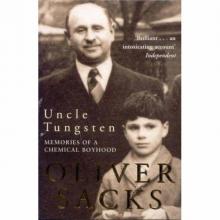 Uncle Tungsten
Uncle Tungsten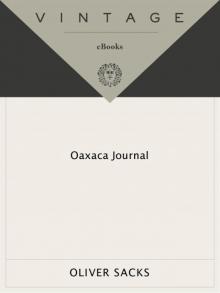 Oaxaca Journal
Oaxaca Journal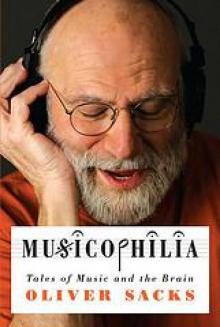 Musicophilia
Musicophilia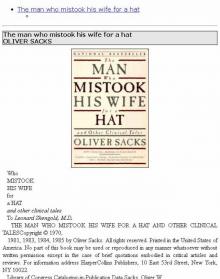 The man who mistook his wife for a hat
The man who mistook his wife for a hat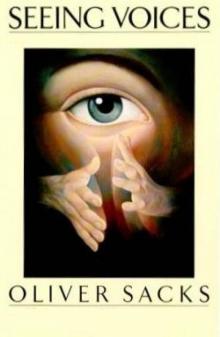 1989 - Seeing Voices
1989 - Seeing Voices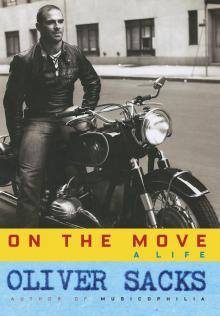 On the Move: A Life
On the Move: A Life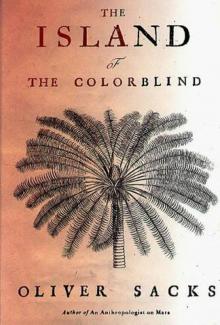 1996 - The Island of the Colorblind
1996 - The Island of the Colorblind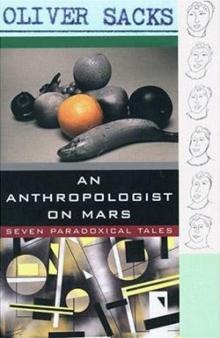 An Anthropologist on Mars: Seven Paradoxical Tales
An Anthropologist on Mars: Seven Paradoxical Tales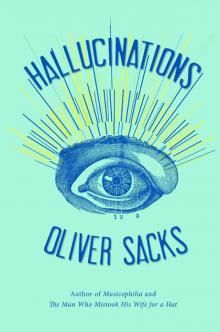 Hallucinations
Hallucinations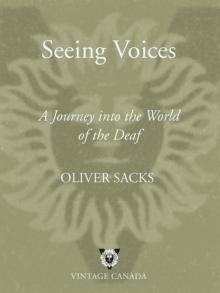 Seeing Voices
Seeing Voices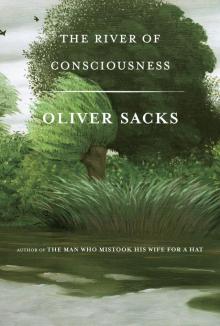 The River of Consciousness
The River of Consciousness Vintage Sacks
Vintage Sacks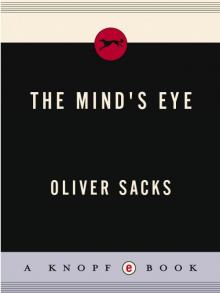 The Mind's Eye
The Mind's Eye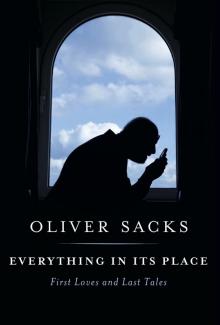 Everything in Its Place
Everything in Its Place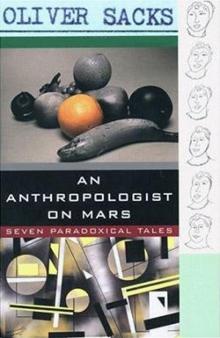 An Anthropologist on Mars (1995)
An Anthropologist on Mars (1995)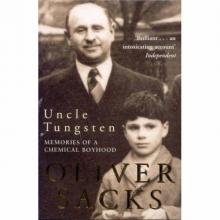 Uncle Tungsten: Memories of a Chemical Boyhood (2001)
Uncle Tungsten: Memories of a Chemical Boyhood (2001)